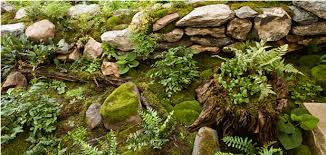Well-kept beautiful lawns are not achieved without steadfast commitment and routine maintenance! And as much effort and time that is spent, too often, other things besides grass have a way of creeping into the most pristine manicured lawns. Some common lawn annoyances and the solutions for these potential eyesores are below.
Weeds:
 Common perennial weeds (like dandelions, plantain and violets) are especially annoying to lawn lovers. Deep rooted perennial weeds can not only hinder a neat appearance but also cause damage to the lawn, by robbing nutrients and moisture from the turf and preventing sunlight absorption. Many times, removing weeds for good requires more than one method of treatment.
Common perennial weeds (like dandelions, plantain and violets) are especially annoying to lawn lovers. Deep rooted perennial weeds can not only hinder a neat appearance but also cause damage to the lawn, by robbing nutrients and moisture from the turf and preventing sunlight absorption. Many times, removing weeds for good requires more than one method of treatment.
Reducing weeds in a heavily weeded lawn may require chemical application of weed killers throughout the growing season, early spring through early winter. Multiple treatments are needed to treat for the particular type of weed that is present. For every weed, there is a killer, but not all weeds will be affected by each product.
A word of caution about applying chemical weed treatments… always read the manufacturer label and follow instructions carefully. The label will give insight into the type of weeds treatable with that specific product. The label also gives you the ratio for application. Some products provide treatment for a broad range of weeds – without harming grass.
Weed killers will destroy other items besides weeds so extreme caution is needed when applying near flower beds, gardens and shrubbery. Spraying during windy conditions will carry the product much farther than noticeable. Only spray weed killers on calm weather days and while following the instructions carefully.
Once weed populations are reduced, manual removal of weeds in small areas is beneficial. This method can also be used in sensitive areas, such as near beds and borders. The most ideal tool for manual weed removal is an old, sturdy kitchen knife. The long straight form allows the entire root system to be cultivated, which is necessary to prevent return of the same weed. “Hand-picking” to remove the top of a weed will not provide permanent removal.
Moss:
 Another common irritation in lawns is moss. Moss is usually present for a variety of reasons. Sometimes the PH of the soil is a factor, which can be easily determined by taking a soil sample and adding nutrients, such as lime, if needed.
Another common irritation in lawns is moss. Moss is usually present for a variety of reasons. Sometimes the PH of the soil is a factor, which can be easily determined by taking a soil sample and adding nutrients, such as lime, if needed.
Other environmental factors that contribute to moss are more difficult to address. Moss typically thrives on the north side of a property. Heavy shade and lawns that border wooded, natural areas are more prone to moss. Lawns that are holding standing water on the turf will be more likely to produce moss as well.
Some action that may minimize moss are reducing tree coverage or shade in the area, having yearly aerification on the lawn to improve moisture absorption, and over seeding regularly to provide more dense turf areas.
Other times, manual removal of moss in heavy moss areas can be required. After manually stripping the moss, chemical treatments may need to be applied followed by additional top soil and seeding.
Something mossy to consider…. Moss can be beautiful when thriving in a particular area. Homeowners often try to produce and grow moss in various areas of a landscape to provide texture, contrast, and variety. If moss is an especially heavy problem on your property, consider embracing it and creating a “mini moss garden” with rocks or stones as accent pieces.
The grass may not always be greener on the other side, but with a little effort and a lot of care, it can be greener at your home! Following these tips and tricks will help immensely – continue to follow Aspen Landscaping on Facebook for more solutions for your lawn. Next week – learn how to enjoy a water feature in your outdoor area!
